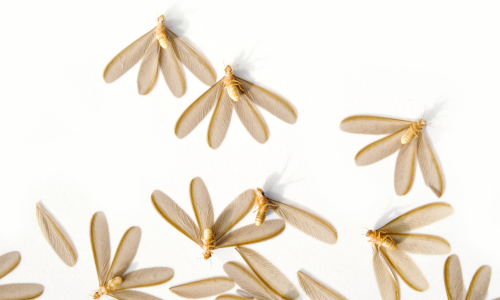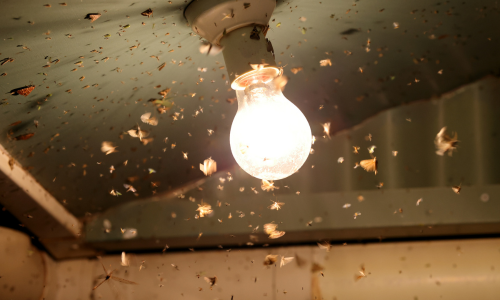It was the first true rain of the season. As the driver slowly maneuvered the child-sized potholes that dotted the road, I looked through the storm at various signs of civilization. The darkness outside of my taxi window enveloped the world around me. Through the rainy night, brown mud huts and tiny brick homes with corrugated roofs spattered the landscape here, yet not one person could be seen. This was the true bush of Africa.
As we neared a district of the Manica province in western Mozambique, I heard the faint sound of drums. The piercing deep boom echoed through my ears as we neared the town. Then, lampposts appeared, sporadically lining the roadside.
Groups of people crowded beneath these lights. The women wore traditional skirts and swung around with their babies held by tatters of brightly printed cloth on their backs. The men, many in slacks and t-shirts gyrating around their thin frames, hopped up and down, some with bare feet.
As we slowed—due to both the gaggle of people and the tremendous, overwhelming potholes, I witnessed a mad flurry of wings obstruct my view. Termite ants—by the thousands—sprung forth from the depths of the earth. Set free at last and in search of a mate, they appeared in droves.

Women and men alike groped frantically at the air. Holding up tight fistfuls of these termite ants (which are also known as white flying ants), they drowned these delicacies—a key source of protein—in large shallow plastic tubs of water. Again their hands reached up. Again they immersed these insects that would serve as food for the children in the days to come.
That evening, entire villages would remain awake, eagerly plucking the wings off of these insects and gingerly laying them on large plastic tarps to dry out. Then, their lifeless, stiff bodies would be fried with a smattering of oil and a sprinkle of salt. In the days that followed, the landscape would be littered with wings and the smell of decay from these thin, paper-like wings.
It seems that a plethora of bugs meet their death through their mindless attraction to fluorescent bulbs.
Which bugs are attracted to light?
To varying degrees, moths and other nocturnal insects—such as the stink bug, the common housefly, the crane fly, the mayfly, and all flying beetle types—are attracted to light. While there is some evidence of diversity in beetle species and their preference to different kinds of light, all species are more attracted to some ultraviolet light.
These insects are all positively phototactic, which means that they move towards a stimulus of light. (There are also negatively phototactic bugs, like the cockroach or the old lady moth.) These positively phototactic bugs are clearly prone to distractions, leaving the comforts of their homes, failing to reproduce, and apparently asking to be eaten by a predator or overheat to death (an untimely demise)…all to aimlessly fly around an artificial moon.
Why are bugs attracted to artificial light?

Lights confuse an insect’s navigational system.
For the nocturnal, follow-the-moon insect community, Jan. 27, 1880, was a bad day, as this was the day that Thomas Edison invented the lightbulb and the dark nights, void of electric light, were no more.
A few decades later, just before World War II, the ultraviolet lamp was invented and popularized for medical purposes. Not only were dark nights long gone, but now this nocturnal community had to deal with an increase in artificial attraction, as this source proved even more fatal than the work of Thomas Edison.
Moths (and other nocturnal insects, like some types of flies) fly towards certain wavelengths of light to seek out food. Sourced in the colors yellow and blue and in UV lights, these wavelengths—which are short—aren’t detected by humans. Moths are able to find certain flowers at night because these flowers naturally reflect UV wavelengths. Accordingly, when a moth sees UV rays, it flaps its wings and heads towards that source, instinctively believing that it’s seeing the reflection of a food source, when in fact it may be artificial light.
Elements within the eyes of these nocturnal dwellers act like miniature telescopes. Thus, when faced with powerful artificial illumination, it’s like a child’s first visit to a candy shop. He or she is so overwhelmed by the vast quantity of paper-wrapped sugary treats that they have a "super-stimulant" experience, finding the whole risky undertaking (at least by the parents' quick calculations) quite enormous and too immense for comprehension. Without a parent’s oversight, the child could go into a candy-tissy and start devouring whatever is within reach. This "super-stimulant" occurrence is exactly what a moth undergoes. The pull towards these artificial moons is irresistible. A quick flight over almost inevitably leads to the death of the moth.
Quick fact: Some insects, such as moths, are able to fly in a straight line, as they are able to keep a fixed flying angle on the moon. This awareness is called transverse orientation.
How can Dr. Killigan’s help?
My team and I stand at the ready to help you with all of your bug-related problems. Here's a look at insect-specific issues:
Moths

If you have small moths flying around your home, you're not alone. Two of the most common varieties of household moths are the pantry moth and the clothing moth.
Clothing moth larvae feast on clothes, carpets and other keratin-rich fabrics. Trust my powerful, pheromone-rich, Premium Clothing Moth Traps to help you get rid of the clothing moths—whether this be the casemaking variety (Tinea pellionella) or the web-spinning variety (Tineola bisselliella).
Pantry moths feed on rice, grains, flour, pasta and other dried food. My non-toxic Premium Pantry Moth Traps (with a proprietary blend of double-potent pheromones and the stickiest glue) that target the male species of the Indian meal moth (Plodia interpunctella), thereby eliminating the reproductive cycle.
Beetles
Once they are inside your home, beetles will often congregate in attics, wall cavities, or other protected locations. For those in cracks and crevices and other hidden-from-view locations, use the Insect Buster (filled with Dust to Dust Non-Toxic Insect Powder) and disperse the solution in these hiding spots. Our tool is one of super-quality and is a must-have for a plethora of insect issues.
Common houseflies, crane flies, and mayflies
To get rid of house flies, crane flies and mayflies, you can’t go wrong with The Fly Inn, a captivating trap for windows. One unit comes with two traps and four sticky glue inserts. The Fly Inn works best when placed properly on windows where flying insects are frequently found. With The Fly Inn, you'll give flying insects a permanent vacation.
If you have any questions about our products or need support to help you tackle your specific bug problem, please contact my team at support@drkilligans.com. We would love to hear from you and help you secure a bug-free home.





















